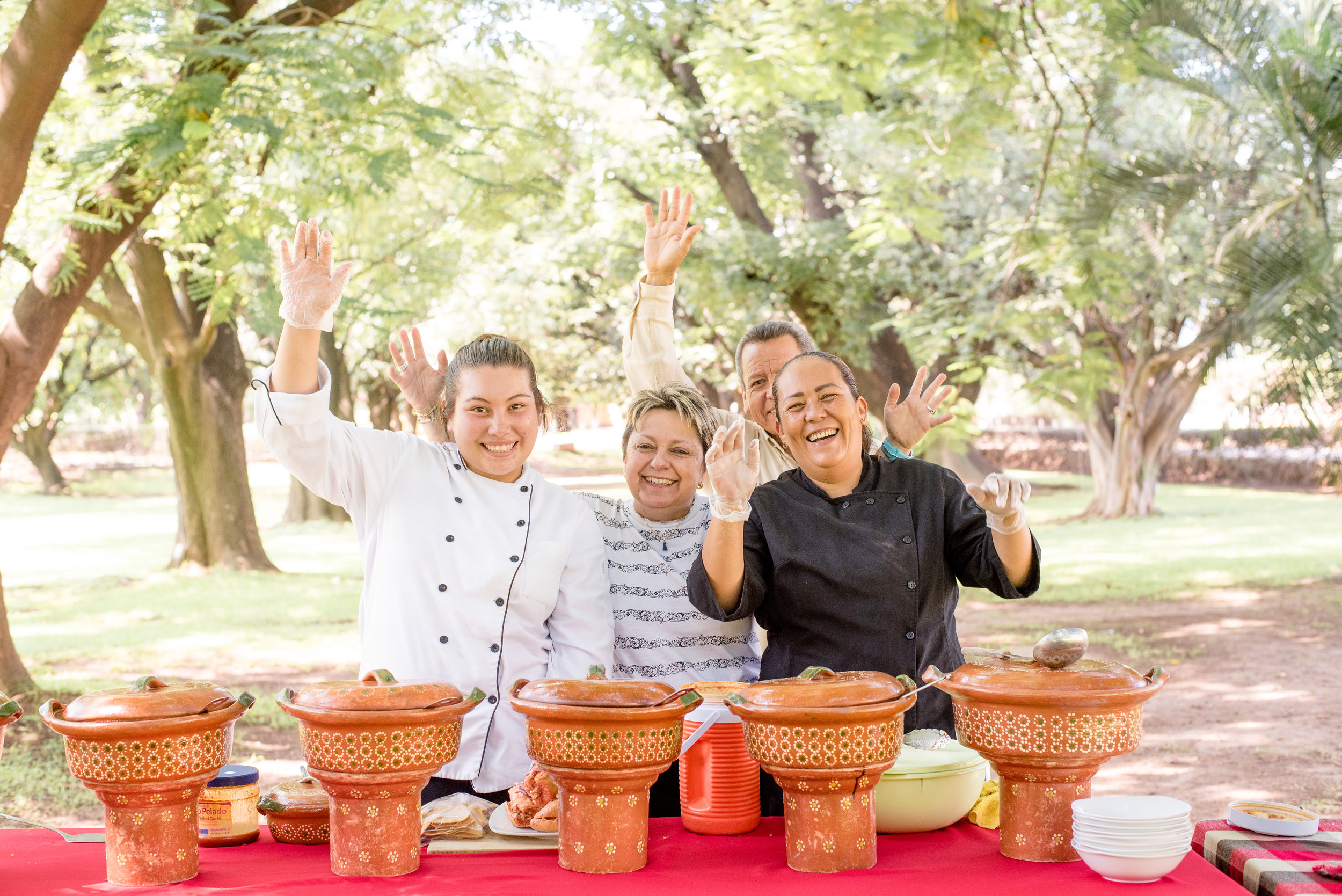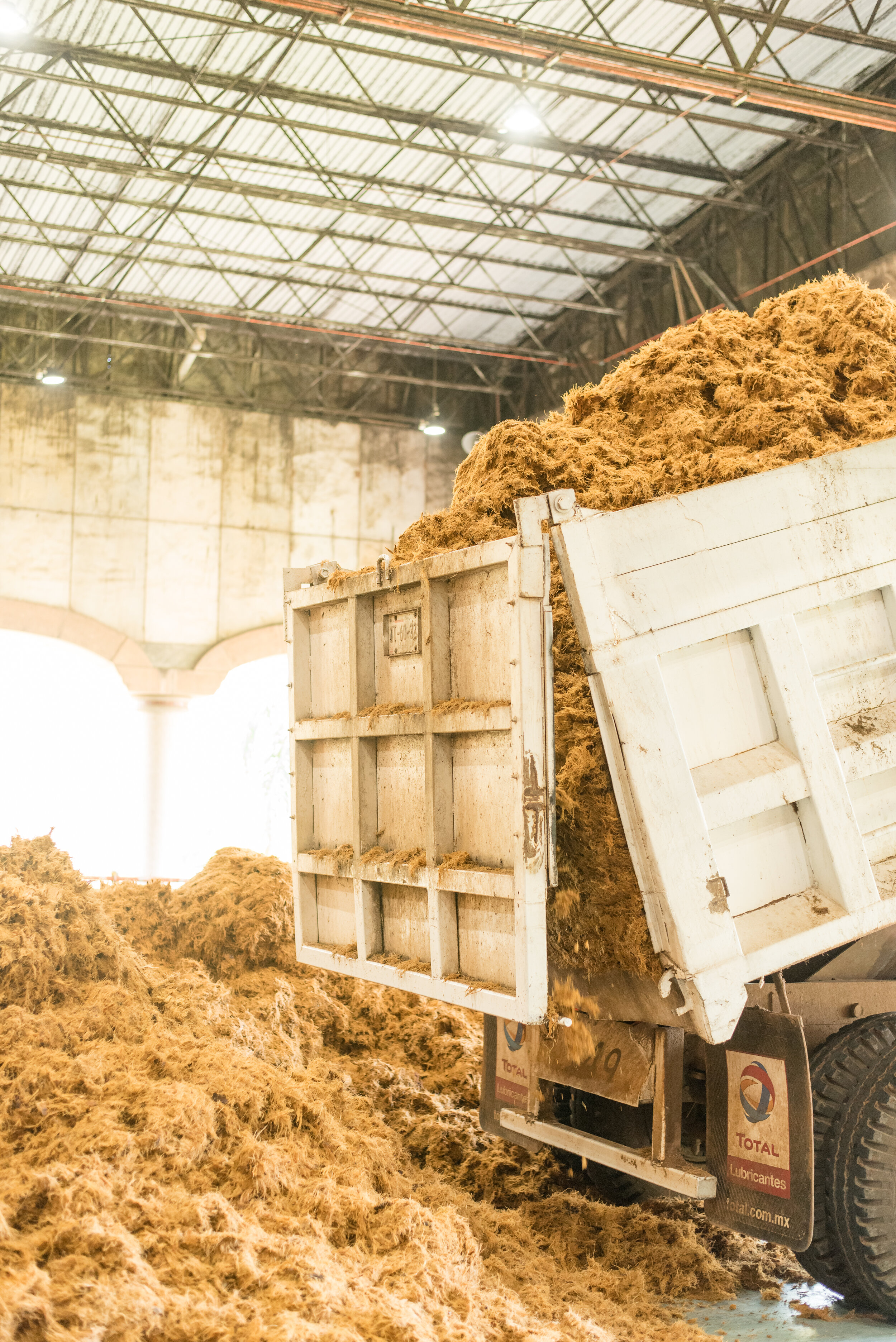Hacienda Herradura: Behind the Scenes
Every so often our PURE Team has the opportunity to visit the Herradura Hacienda in Jalisco, Mexico to handpick the next barrels of Herradura Double Barrel Tequila for Pure. While the Double Barrel didn’t start as the star margarita, it has become one of our best-selling top-shelf margaritas over the years ultimately making us the top seller of Herradura east of the Mississippi! Each visit to Herradura brings an in-depth tour of the incredible facility, consisting of over 260 acres inside the hacienda, and nearly 20,000 acres of growing land outside the walls. Each agave plant takes nearly 7 years to grow before harvesting the pina and beginning the tequila-making process. There’s so much more to tequila than the difference between a blanco, reposado, anejo, and muy anejo.
Step 1: Harvesting
After growing, the first step in producing tequila is harvesting. The piña must be carefully removed from the rest of the plant with a sharp tool by the ‘ Jimador’ or harvester in order to ensure the highest quality product. Any part of the plant that is not removed can create a bitter taste when cooked and influence the final product. Herradura takes great care to ensure the core of the piña is removed (shown below) as it can alter the tequila’s taste. Before cooking, the agave is crunchy and not very sweet, similar to jicama. This will change once the cooking process begins and the sugars begin to break-down.
Step 2: loading & cooking
Once the piñas are prepared, it is time to load the brick-bottomed oven which can take several hours. Once loaded, the piñas slow cook for 26 hours before cooling for 24 hours, being unloaded, which can take another few hours, and shredded. You can see how much the agave have already changed after cooking. The color is now a rich brown and the taste is very sweet, almost like syrup. Herradura exclusively uses traditional clay/brick ovens called hornos to cook their agaves. Many tequila manufacturers now use stainless steel autoclaves to cook the piñas which reduce cooking time but produce a tequila without as much flavor and depth.
Step 3: extraction
Once unloaded, the agave is shredded and sent through a mill to extract the juices from the fibers. While much of the juice is extracted during the cooking process and through its first run through the mill, the fibers are run through the machinery a second time, along with water, to pull the rest of the juice out of the agave. These two juices , pure agave juice and agave juice mixed with water, called Miel de Agave and Jugo de Agave, are then mixed together before fermentation. This combination, called mosto, has great flavor and is not too sweet, the perfect balance between the Miel de Agave and Jugo de Agave.
Step 4: fermentation
Fermentation is where the magic happens and is where any sugars in the mosto are converted into alcohol. What sets Herradura apart from most distilleries is that all the yeast that allow fermentation to occur is airborne and actually comes from the many varieties of fruit trees on the property. In fact, much of the fruit that is borne is allowed to fall to the ground for this very reason. Many distilleries use their own yeast strains or commercially available yeasts, while Herradura is one of the very few, if not only distillery, to ferment using 100% natural yeasts from their own hacienda. Once fermentation begins, the surface will begin bubbling as the yeast go to work. Over the next few days, the yeast will eat the sugars in the juice, slowly reducing the sugar content. When the fermentation process is complete, the surface will be smooth and free of bubbles, which means it’s time to distill the juice!
Step 5: distillation
Did you know that tequila must be distilled twice, legally, in order to actually be considered tequila? When fermentatation of the mosto is complete, it is called mosto muerto. Once cooled, the first round of distillation begins, producing a liquid called ‘ordinario’. This liquid is distilled one more time to produce blanco tequila!
Step 6: aging
Once distilled, it’s time for aging! Herradura ages it’s tequila in old oak whiskey barrels. Even though a blanco tequila does not need to age before begin bottled, Herradura ages it’s blanco for 45 days just to give it a smooth finish. Here’s how long your favorite Herradura tequila sits and soaks up all the flavor before being bottled:
Blanco: 45 days
Reposado: Between 2-12 months
Anejo: 1-3 years
Extra Anejo: 3+ years
the old distillery
Up until 1963, Herradura was making tequila in it’s Old Factory. It sure is a sight to see ! Unlike at the new factory, mosto was traditionally produced using the millstone, pulled by a horse or donkey. Once the liquid was extracted from the agave, it was placed in ‘fermentation tanks’ or holes in the ground, as seen below. Once fermented, distillation would begin in the fire-heated copper vats to produce a deliciously pure tequila.

































